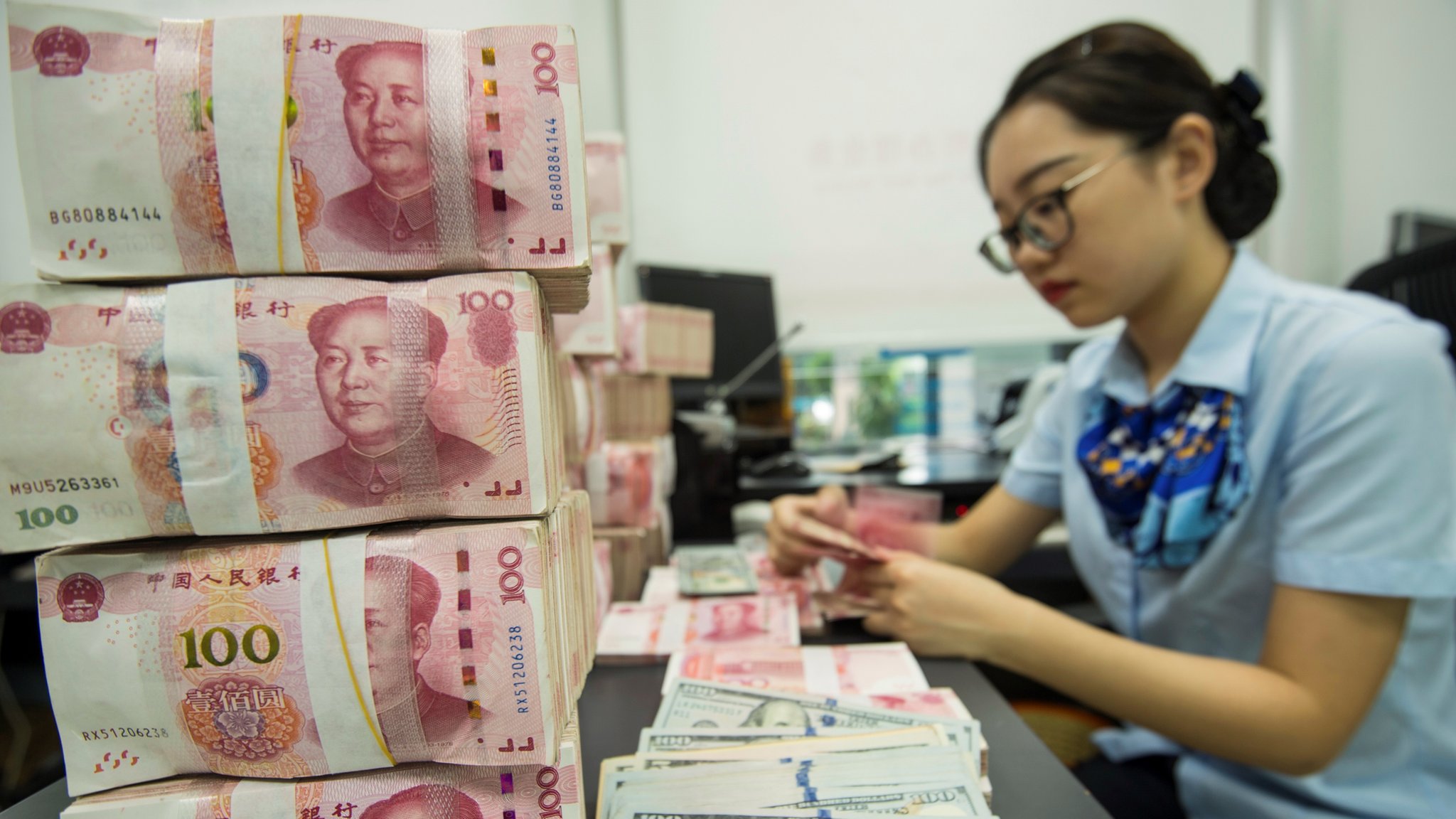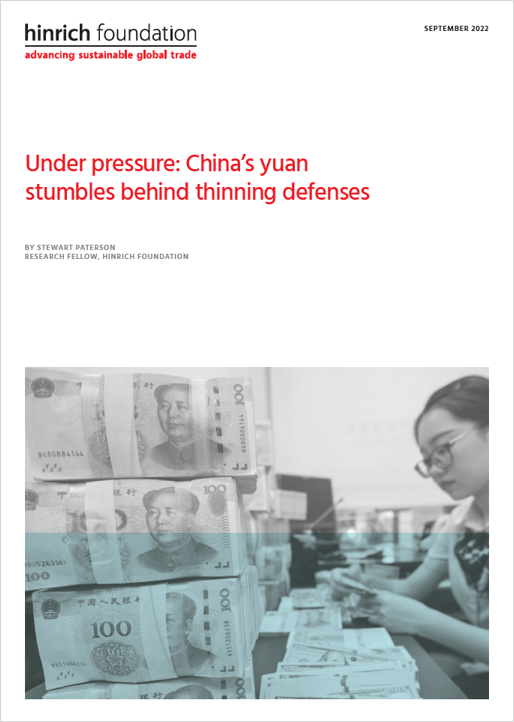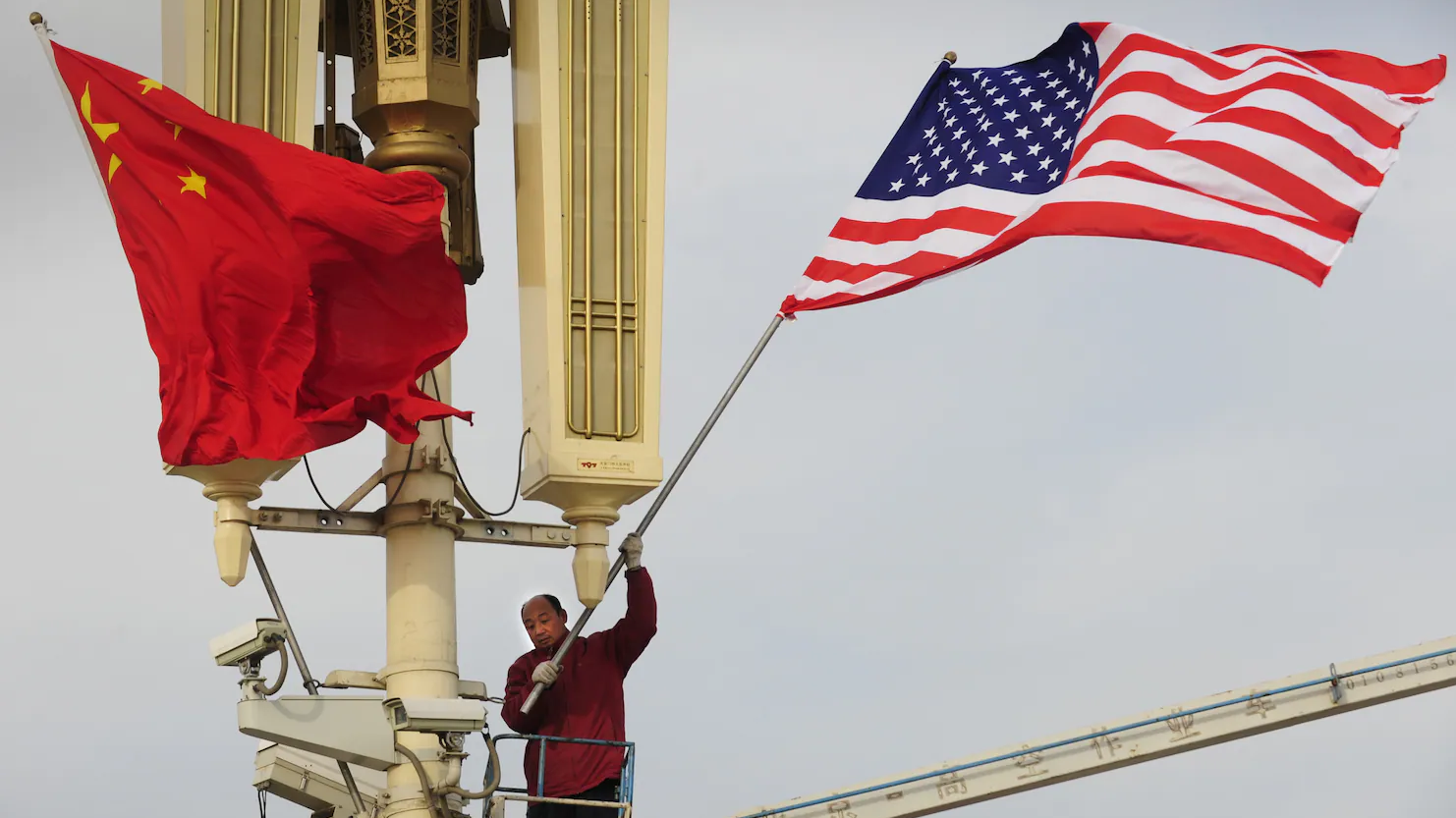Trade distortion and protectionism
Under pressure: China’s yuan stumbles behind thinning defenses
Published 27 September 2022
A stable yuan-dollar exchange rate has been a core plank of China’s economic development model. But a combination of cyclical and structural factors are putting downward pressure on the yuan, leading to an exodus of foreign and domestic capital at a time when countries are pushing back against China's manufacturing dominance. What does it mean for China and the global economy?
In recent months, as US dollar interest rates have risen and China’s economy has slowed dramatically, the Chinese yuan’s exchange rate against the dollar has started to come under sustained pressure, falling in September to its lowest level in more than two years.
This paper by Research Fellow Stewart Paterson sets out to analyze the prospects of a prolonged or dramatic decline in the value of China’s currency and the possible impact this would have on the global trading system.
For some three decades, China has tightly managed its exchange rate as part of its export driven growth model. The desire to control the currency’s value has helped fuel a dramatic expansion in the bank balance sheets and China’s capital stock, the returns on which have been declining. Compounding the impact of a global monetary tightening cycle and the domestic growth downturn, China’s mercantilist policies have induced a policy response from around the world aimed at reducing dependency on the country's vast manufacturing base. In consequence, China might find it harder to earn export dollars in the future while pressure mounts on its capital account. China’s foreign exchange reserves now provide a thin line of defense against a severe decline in its exchange rate, making its capital controls an even more important weapon against financial instability.
Cyclically, several factors are combining to make a return to yuan volatility more likely. The most important combination by far is the tightening in US monetary policy induced by the inflation shock, combined with the slowdown in China’s property market and, consequently, broader economy.
With the supply-side shock from the Russian invasion of Ukraine and the spillover impact from the pandemic, producing inflation in the US and elsewhere, a pronounced rise in nominal interest rates is putting pressure on the yuan-dollar cross. While theoretically China’s capital controls might limit the exodus to foreign-owned capital, as demonstrated in China’s stock market meltdown and subsequent capital flight in 2015-2016, domestic capital can find illegitimate ways of leaving China.
© The Hinrich Foundation. See our website Terms and conditions for our copyright and reprint policy. All statements of fact and the views, conclusions and recommendations expressed in this publication are the sole responsibility of the author(s).






